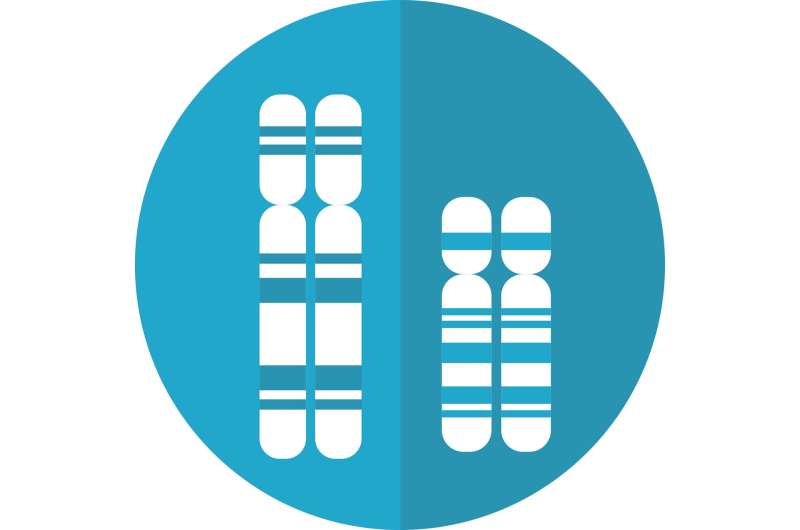B chromosome first—mechanisms behind the drive of B chromosomes uncovered

The specific number of chromosomes is one of the defining characteristics of a species. Whilst the common fruit fly carries 8 chromosomes, the genome of bread wheat counts 42 chromosomes. In comparison, the human genome is made out of a total of 46 chromosomes. However, about 15% of all eukaryotic species additionally carry supernumerary chromosomes referred to as "B chromosomes". Other than the essential chromosomes of the genome, B chromosomes are expendable and often preferentially inherited. This leads to a transmission advantage for B chromosomes called "chromosome drive". To date, little knowledge exists about the mechanisms behind this phenomenon. Researchers from the Leibniz Institute of Plant Genetics and Crop Plant Research (IPK) in Gatersleben have now been able to decipher the mechanisms behind the drive of B chromosomes in the goatgrass Aegilops speltoides. The novel insights in the workings of chromosome drive were recently published in New Phytologist.
Chromosomes are thread-like structures, carrying nuclear DNA. The majority of chromosomes found in the genome of an organism, also referred to as A chromosomes, carry genetic information vital for its development and reproduction. Nevertheless, thousands of fungi, plant and animal species carry supernumerary chromosomes, which bring no visible advantage to their host organism and instead can have a negative effect on the host's fitness if they occur in higher numbers. These so-called B chromosomes were first described in 1907 and the purpose of these seemingly selfish chromosomes has ever since been a black box to scientists.
Recent studies suggest that B chromosomes likely are by-products of the evolution of the standard A chromosomes. Further, it is known that B chromosomes have an advantage when it comes to their inheritance. Instead of obeying the Mendelian law of equal segregation, which describes how pairs of chromosomes are separated into gametes, B chromosomes often show an increased transmission rate, higher than 0.5. Understanding this "drive" of the B chromosomes is considered a key for understanding the biology of B chromosomes. Scientists from the research group "Chromosome Structure and Function" of the Leibniz Institute of Plant Genetics and Crop Plant Research (IPK) in Gatersleben have now uncovered the mechanisms behind the drive of B chromosomes within one of the progenitors of wheat, the poaceae Aegilops speltoides.
Ae. speltoides is known to carry up to 8 B chromosomes in addition to its 14 standard A chromosomes. Using comparative genomics, the scientists identified a B chromosome-specific repeat within Ae. speltoides, which allowed them to identify and track the B chromosomes during pollen development. This revealed that an asymmetric spindle and the nondisjunction of the chromosomes' sister chromatids during the first pollen grain mitosis were causing the accumulation of B chromosomes. Further, in order to differentiate between the vegetative and sperm nuclei of the pollen grain, as well as to quantify the B chromosomes within the different nuclei, the scientists developed a novel flow cytometric approach. Thanks to this, they were able to show that over 93% of the B chromosomes accumulated within the generative sperm nuclei.
The study demonstrates quantitative flow cytometry as a useful and reliable method to investigate the drive of B chromosomes. More importantly, it provides a new understanding of the mechanisms behind chromosome drive, which will help to further efforts in deciphering the function, regulation and evolution of plant chromosomes. As such, perhaps one day, the hidden purpose behind the selfish chromosomes will be revealed.
More information: DanDan Wu et al, Nondisjunction and unequal spindle organization accompany the drive of Aegilops speltoides B chromosomes, New Phytologist (2019). DOI: 10.1111/nph.15875
Journal information: New Phytologist
Provided by Leibniz Institute of Plant Genetics and Crop Plant Research


















